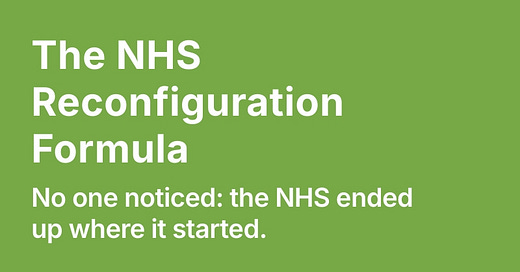When Wes Streeting, the Health and Social Care Secretary, spoke at the NHS ConfedExpo 2025 in Manchester about “our” vision for a new model of NHS care, we couldn't help noticing Wes’s fervent support for NHS reconfiguration.
“So if you need to reconfigure services to cut waiting times, modernise and improve productivity, you will have my support. In fac…




